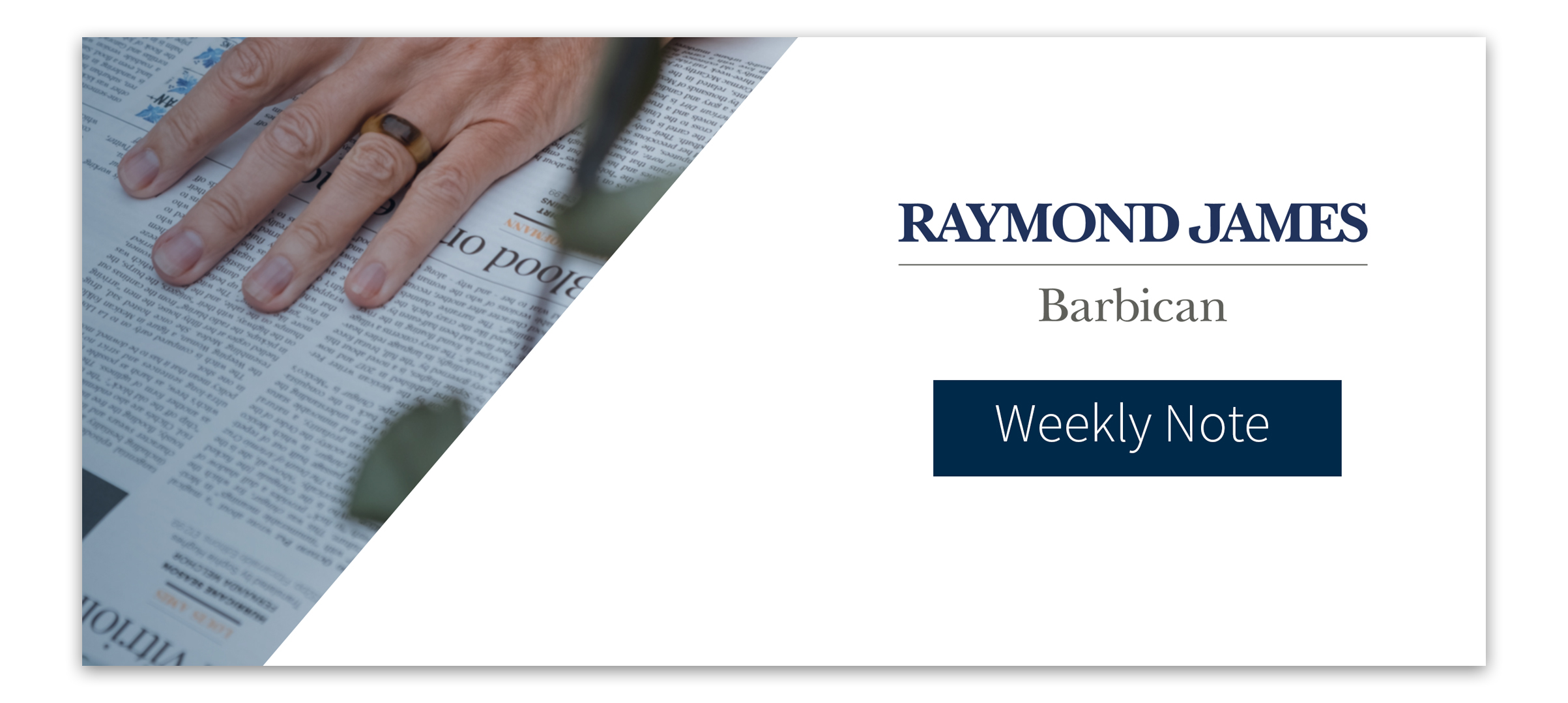Today marks the 15th anniversary since Lehmann Brothers filed for bankruptcy. The news of Lehmann Brothers going under, an institution many deemed too big to fail, led to global equities falling around 5% on the day. Thankfully, today, and this week, equity markets have been a lot kinder to investors.
We will start with the UK where equities posted around a 2% rise on Thursday, with the large cap index up close to 1% on Friday morning. We received mixed data this week from the UK, with record high wage growth reported alongside rising unemployment (4.3%) and GDP contracting on a month-on-month basis. In aggregate it appears the UK economy is now slowing under the weight of higher interest rates, and the Bank of England are unlikely to continue much further with their rate hiking strategy. Over the summer months terminal UK rates were expected to be north of 6.5%, that number is now closer to 5.5%. The lower growth and lower interest rate expectations led to sterling falling against the USD to 1.24, a three-month low. While the expectation of lower rates helped UK equities, there was another kicker for sectors such as mining as China announced new stimulus measures to help their flagging economy. Anglo American rose over 7% on Thursday, while companies such as Glencore also posted strong returns.
US headline inflation rose to 3.7% on a yearly basis, the second consecutive month inflation has nudged higher. The recent pickup in oil prices is seen as one of the drivers of the acceleration in inflation. Despite the elevated inflation number, the US Fed is still expected to pause at their meeting next week and not raise interest rates any further. The prospect of an end to the rate hikes buoyed US equities and led to bond yields declining.
On Thursday China’s central bank lowered banks reserve requirements in an effort to increase liquidity and stimulate growth. This is the second time this year that reserve requirements have been cut. After months of poor economic data both retail sales and industrial production in China came in above expectations. This may be an early sign that prior policy measures are beginning to kick in and support the world’s second largest economy.
Oil prices have continued to rise this week driven by supply cuts from Saudi Arabia and Russia. Brent crude rose above $92 a barrel for the first time this year. Central banks will be watching the oil price closely given its impact on inflation.
British chipmaker Arm, which is based in Cambridge, listed on the Nasdaq this week in the biggest initial public offering (IPO) since 2021. The stock listed at $51 a share, valuing Arm at $60billion, however by the end of the day the stock had risen by 25%. The decision of Arm to not list in the UK was a bitter disappointment to many in the UK government and may lead to reforms to aim to encourage companies to list in the UK.
As investors it is important to study history and see if there are any lessons that can be learnt. 15 years ago, it felt like a very difficult time to invest, and yet those investors who were able to look through the short-term issues and take advantage of panicked sellers and cheap valuations went on to make highly attractive returns over the next 15 years. While Lehmann Brothers going bust didn’t signify the very bottom of the market (this was March 2009), it was a fantastic long-term entry point, nonetheless. Timing the markets is notoriously hard, yet buying when others are fearful, is often a sensible strategy.
Andy Triggs, Head of Investments
Risk warning: With investing, your capital is at risk. The value of investments and the income from them can go down as well as up and you may not recover the amount of your initial investment. Certain investments carry a higher degree of risk than others and are, therefore, unsuitable for some investors.




